Art
#clay
#coral
#found objects
#plants
#sculpture
Coral and Plant Life Consume Discarded Objects in Post-Apocalyptic Sculptures by Stéphanie Kilgast
September 2, 2021
Grace Ebert
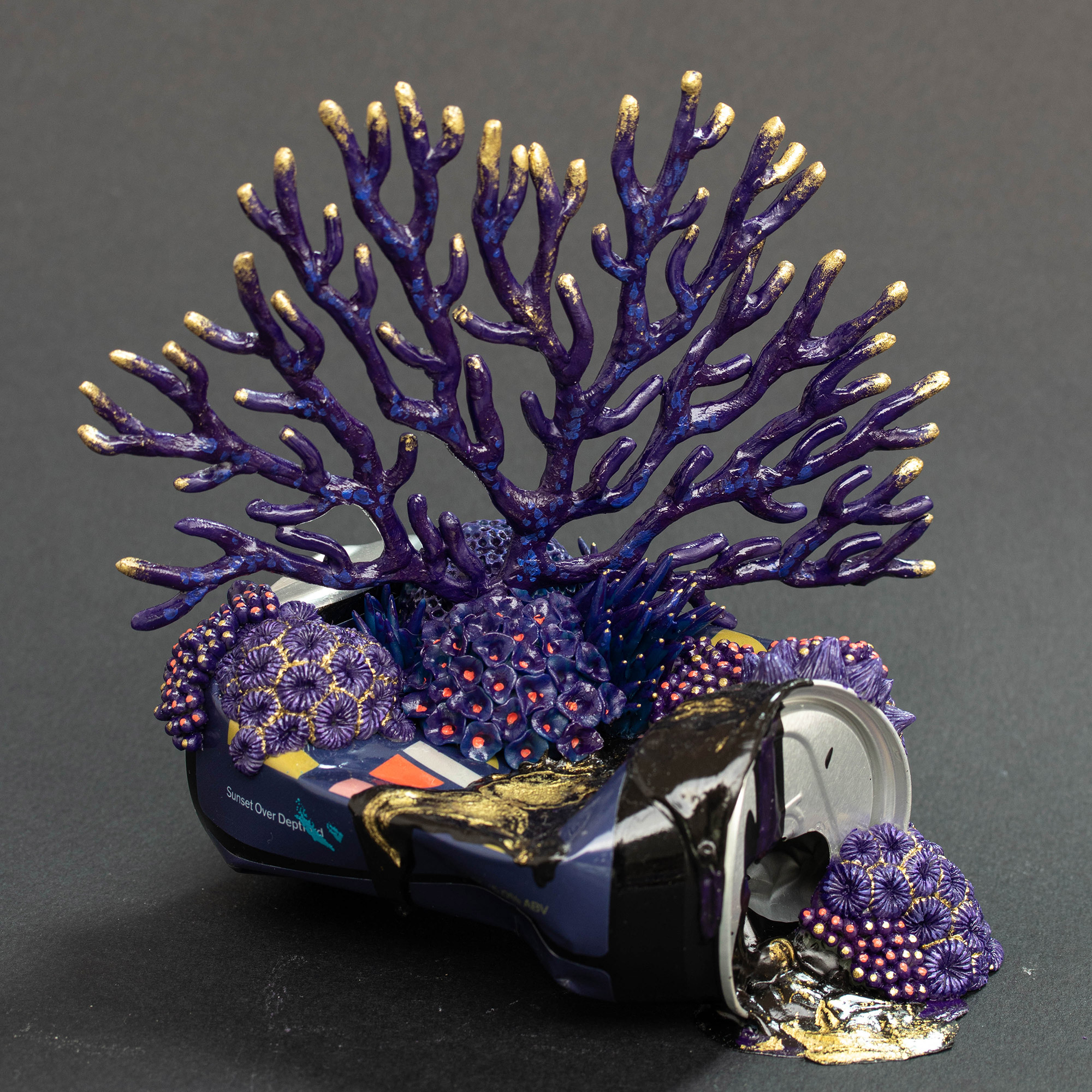
“Coral Royal” (2019), epoxy clay, acrylics on tin can, 14 x 15 x 11 centimeters. All images © Stéphanie Kilgast, shared with permission
Artist Stéphanie Kilgast (previously) envisions a vibrant, post-apocalyptic world overgrown with coral, fungi, and lush moss. Using cheap devices and disposable containers that tend to outlast their original function as her base, Kilgast creates painted-clay assemblages that are teeming with fantastical colors and texture: mushrooms sprout from an empty paint tube, sea creatures envelop a crushed can, and plant life cloaks a pair of headphones with whimsical botanicals.
Each of the works contrasts the enduring manufactured object with natural growth, imagining a universe that’s simultaneously devoid of humanity and still marred by its rampant consumption habits. “In that sense my work is joyous. I remove the root of the problem, us, and let all the other species just grow over our mistakes,” she shares. “Nature itself is full of bright colors. It’s inherently beautiful, and my work is an ode to all the living and existing species, (except) for us. Hope dies last, so I still hope my work opens up discussion, thinking, and eventually change.”
Currently based in Vannes, France, Kilgast has exhibitions at Comoedia in Brest, France, Modern Eden in San Francisco, and three at Melbourne’s Beinart Gallery slated for 2022. She also shares much of her process on YouTube and Instagram.
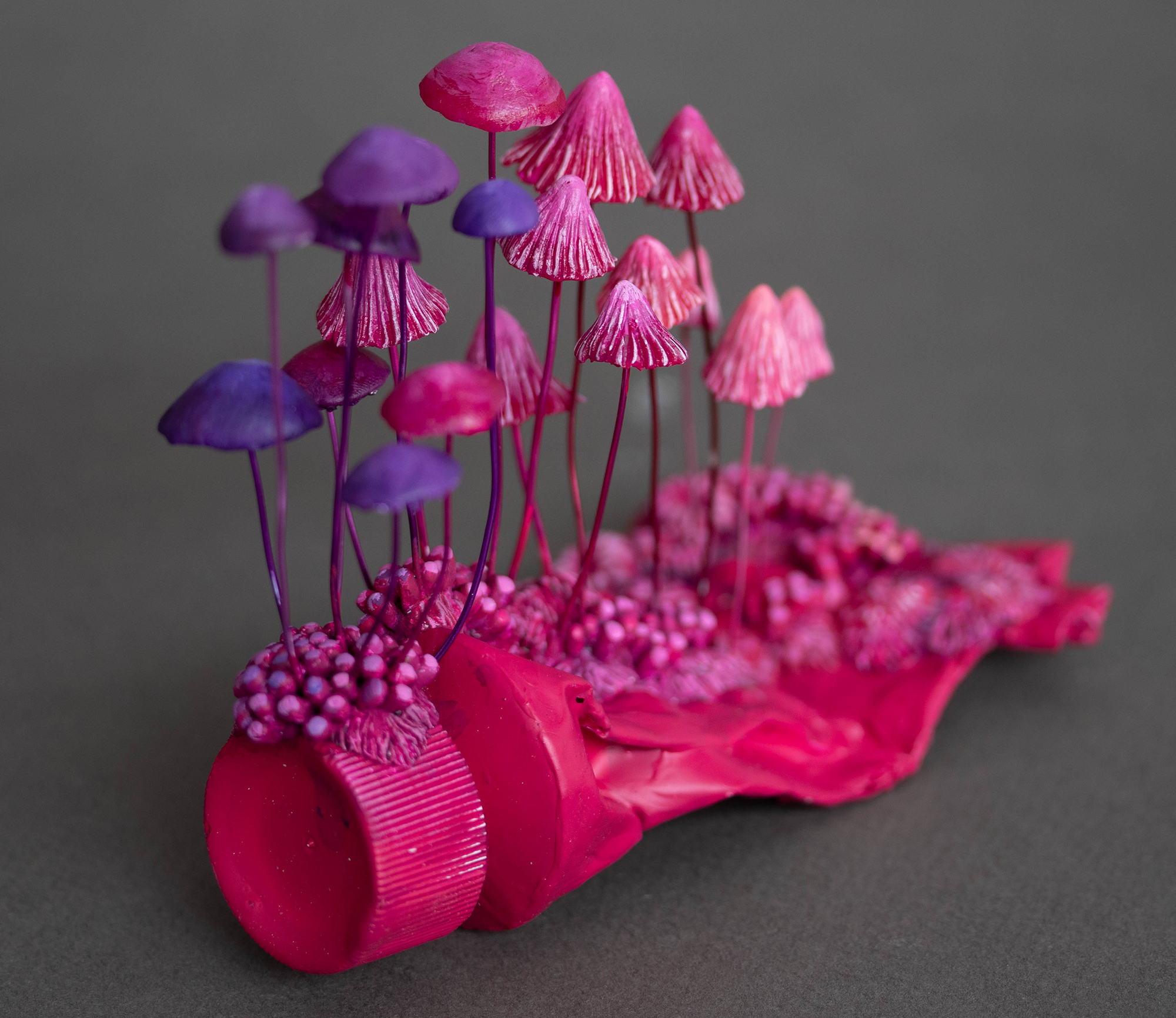
“Quinacridone Magenta” (2021), cold porcelain, epoxy clay, acrylics, wire on empty paint tube, 10 x 7 x 13 centimeters
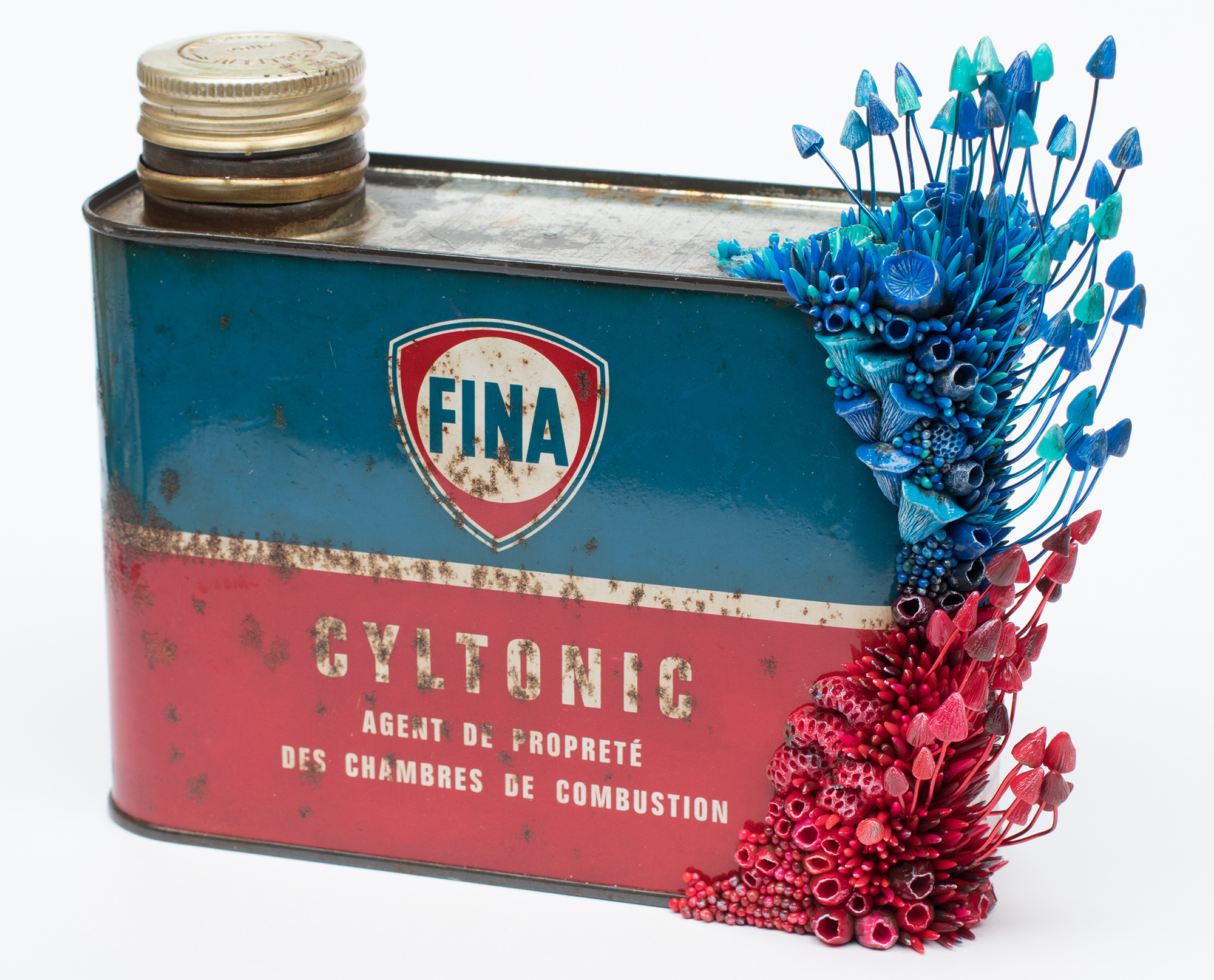
“Cyltonic” (2018), polymer clay, acrylics, wire, thrifted can of cleaning agent, 17 x 9 x 19 centimeters
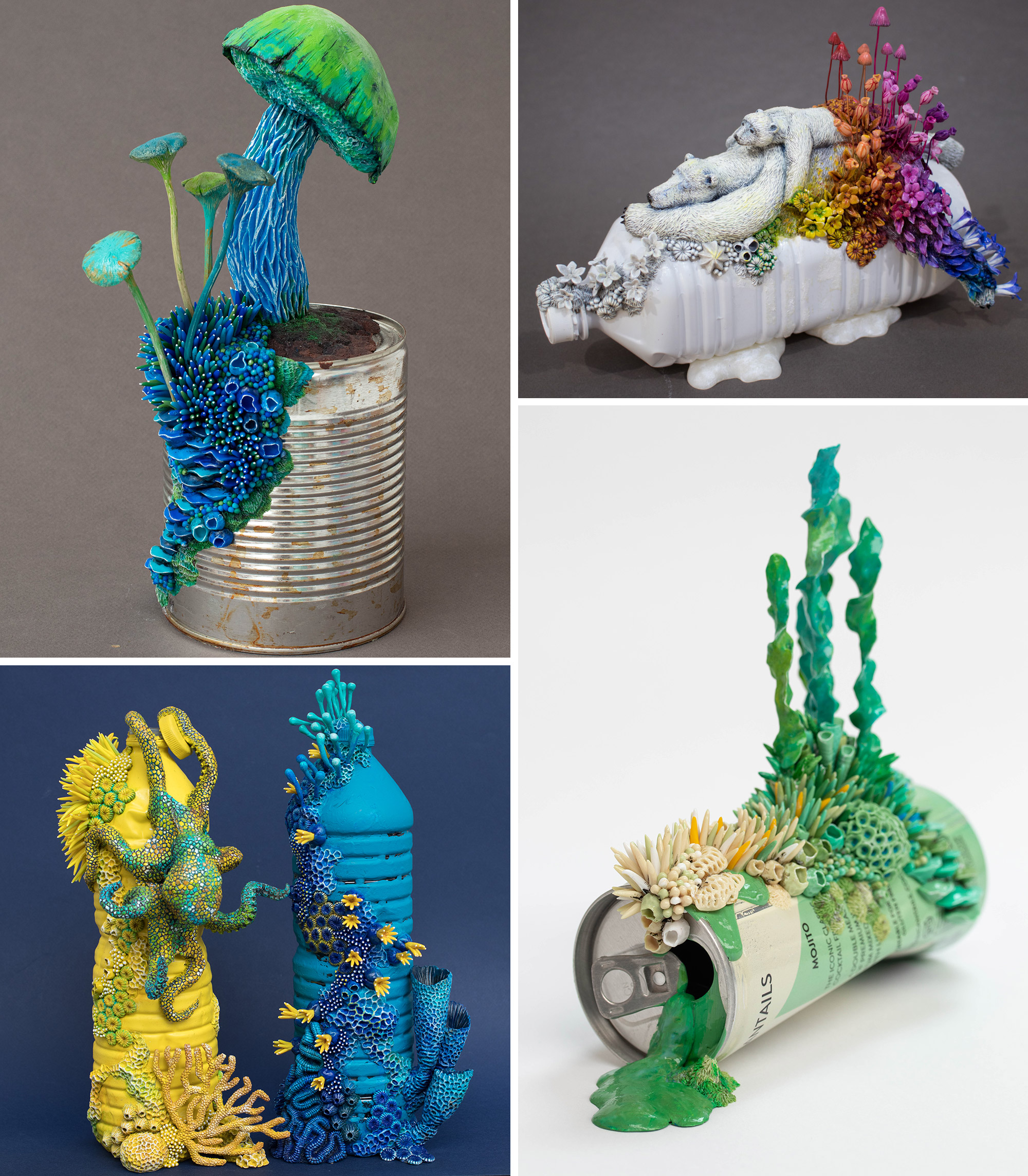
Top left: “Blue Boletus” (2020), polymer clay, acrylics, wire on tin can, 25 x 14 x 10 centimeters. Top right: “Serene” (2020), epoxy clay, polymer clay, acrylics, wire on empty acrylic plastic bottle, 25 x 12 x 17 centimeters. Bottom left: “Yellow Exploration (Octopus)” (2020), epoxy clay, polymer clay, acrylics on empty acrylic plastic bottle, 32 x 16 x 15 centimeters and “Blue Bottle (Coral Reef)” (2020), epoxy clay, polymer clay, acrylics on empty acrylic plastic bottle, 35 x 15 x 11 centimeters. Bottom right: “Mojito” (2019), poxy clay, polymer clay, acrylics on tin can, 17 x 17 x 7 centimeters
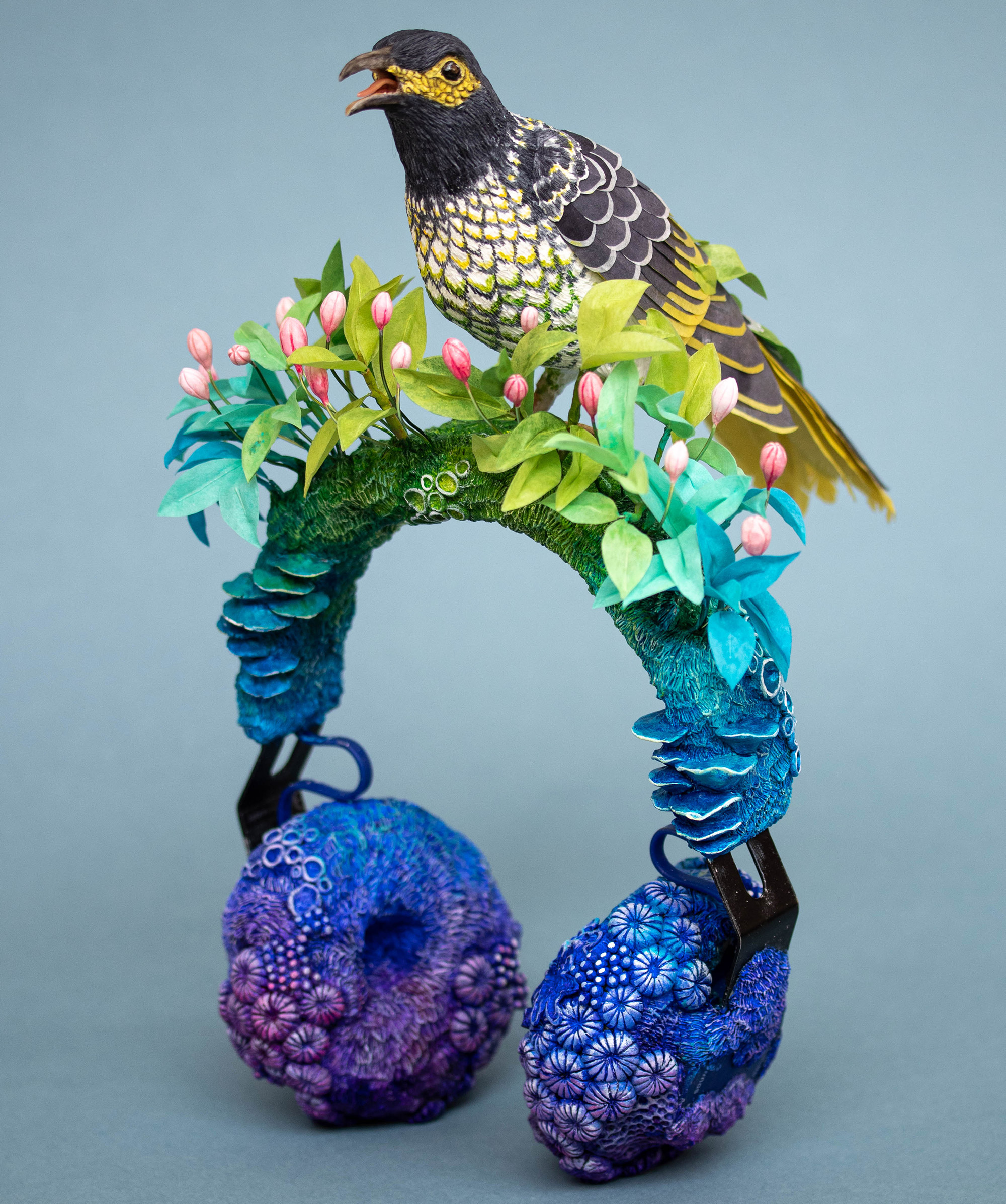
“Losing My Song Culture” (2021), epoxy clay, air-dry clay, cold porcelain, paper, watercolor, acrylics, on broken headphones, 28 x 18 x 17 centimeters
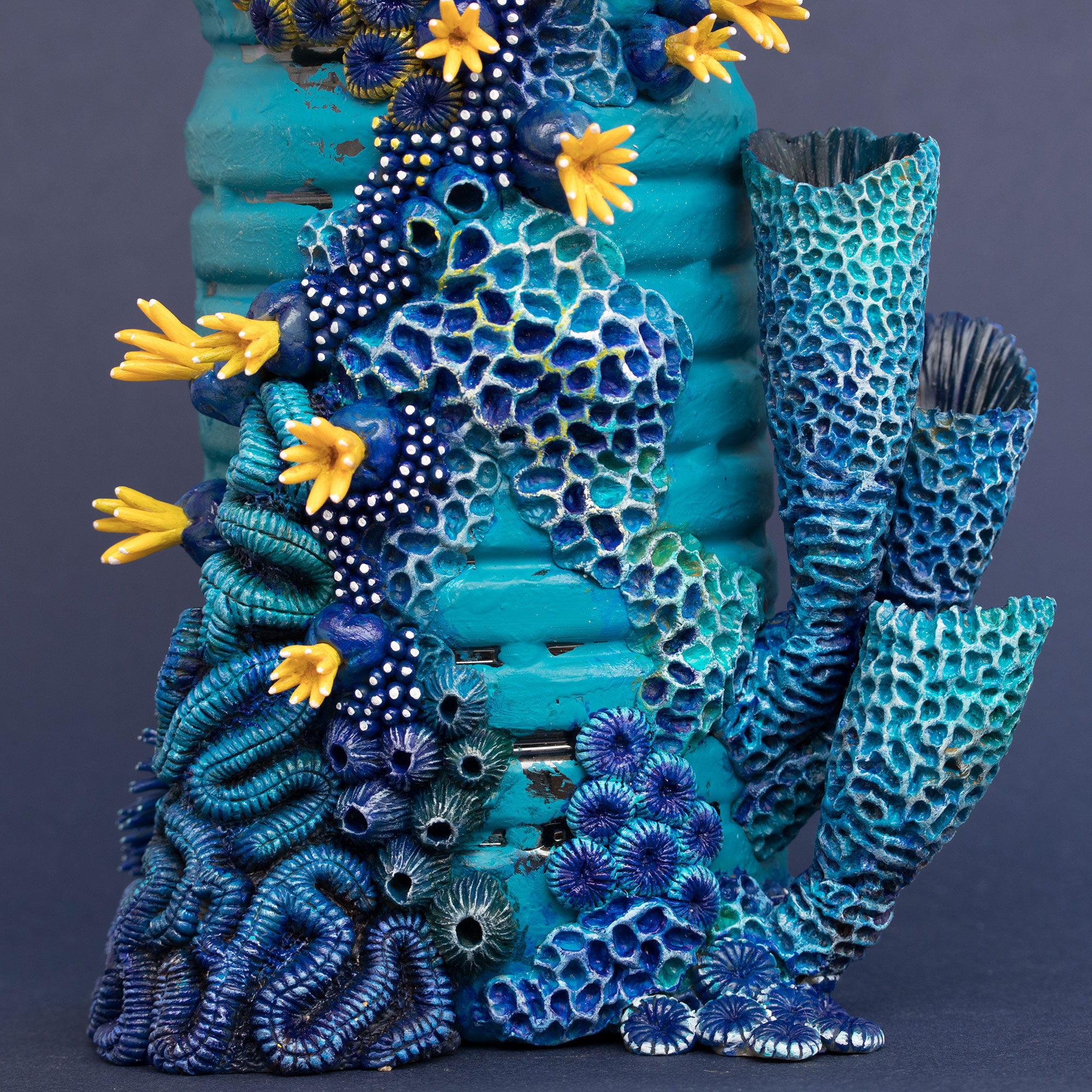
Detail of “Blue Bottle (Coral Reef)” (2020), epoxy clay, polymer clay, acrylics on empty acrylic plastic bottle, 35 x 15 x 11 centimeters
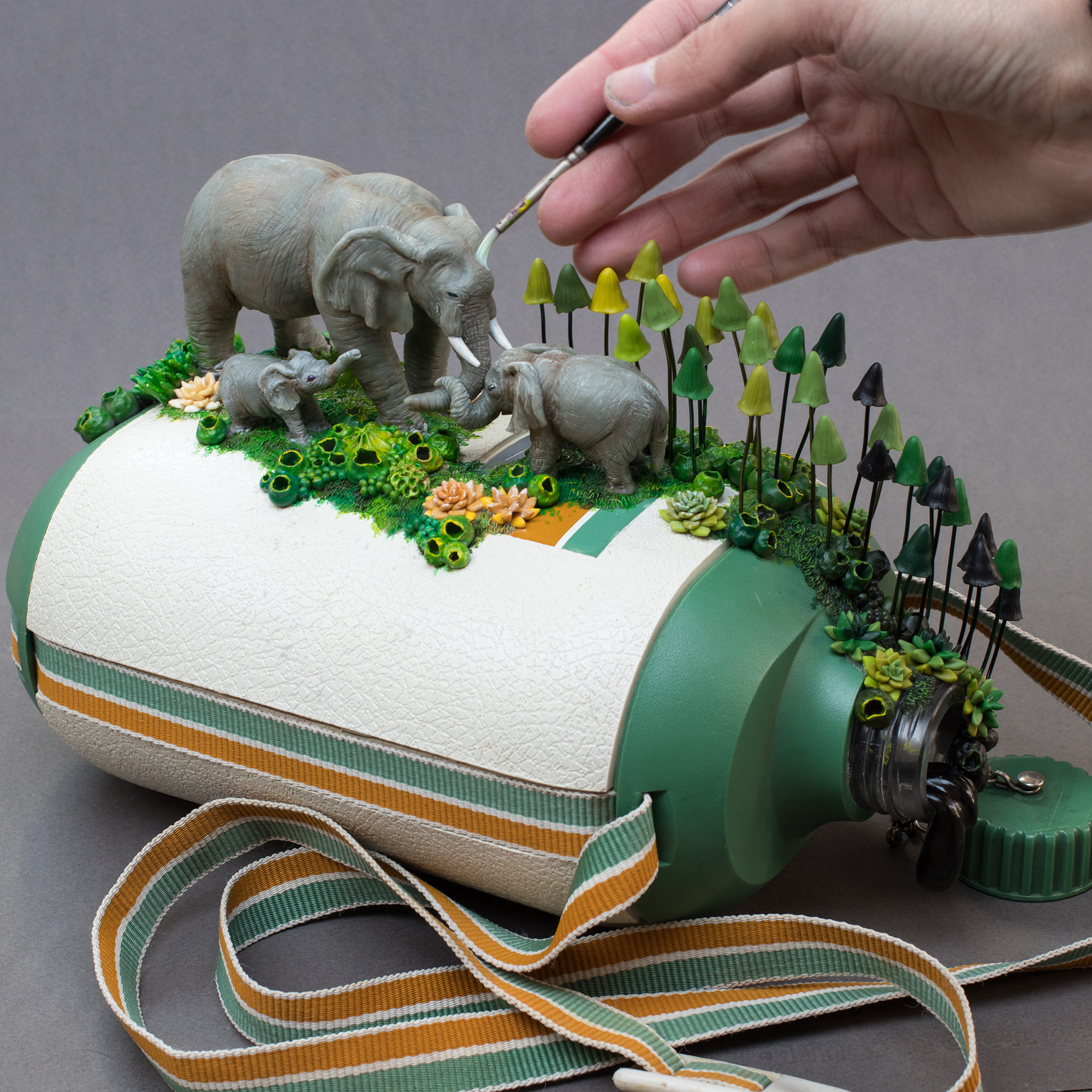
“Mother (Elephants)” (2019), epoxy clay, polymer clay, acrylics, wire, thrifted plastic canteen, 17 x 14 x 26 centimeters
#clay
#coral
#found objects
#plants
#sculpture
Do stories and artists like this matter to you? Become a Colossal Member and support independent arts publishing. Join a community of like-minded readers who are passionate about contemporary art, help support our interview series, gain access to partner discounts, and much more. Join now!
Share this story
Also on Colossal
Related posts on Colossal about clay coral found objects plants sculpture
Discarded Objects are Beautified with Colorful Coral-Like Growths by Stephanie Kilgast
Sorrowful Sculptures Designed in a Three-Part Collaboration Meditate on Life, Loss, and Regeneration
Intricate Landscapes and Tiny Houses ‘Painted’ With Multi-Colored Thread
Countless Hand-Scored Notches Comprise Aquatic Sculptures by Lisa Stevens
Recycled PET Plastic Bottle Plant Sculptures by Veronika Richterová
This article comes from the Internet:Coral and Plant Life Consume Discarded Objects in Post-Apocalyptic Sculptures by Stéphanie Kilgast